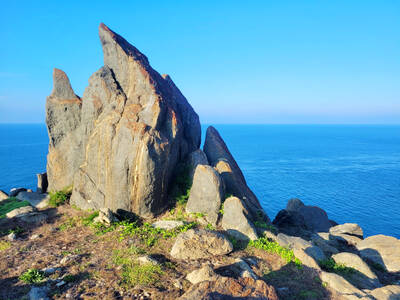TECHNOLOGY
A few themes will dominate the year. The first is the AI bubble into which the tech giants have been pumping unconscionable sums of money with, at the moment, no conceivable or proportionate return. The two big questions then are: when will it burst — and when it does, what will be the consequences?
Investors will lose their shirts, as usual, but the impact will be more significant than the dotcom bust in 2000, and stock markets will feel it first, as tech stocks have a disproportionate impact on the key indices.
There will also be a consummation of the shotgun marriage between the tech industry and US politics. From now on they will be inextricably mixed — as the tech moguls intuited when they decided to endorse Trump.
Elon Musk and X will thrive, as will Trump’s Truth Social. Bluesky will become the last redoubt of liberalism. And LinkedIn will follow the corporate herd. It’s not clear how Trump will vent his spite against Meta, but he will. The company may eventually decide that it will have to split into two entities: Meta US, which conforms to Trumpian decrees, and Meta EU, which can operate within EU jurisdiction and elsewhere.
As far as Google is concerned, just about the only initiative the US justice department will continue is the antitrust case against Google. This will end only when the company is forced to divest itself of Chrome (and maybe some other bits too).
Elsewhere on the regulatory front, the Federal Communications Commission (FCC), under the chairmanship of Brendan Carr, will pursue fruitless attempts to amend Section 230 of the 1996 Telecommunications Act to bring social media under the governmental heel. Carr also has fantasies about trying to ensure the first amendment protects only speech that is congenial to the MAGA regime.
Under Trump, cryptocurrencies will be liberated from the fear of oversight by government authorities, with societal consequences that will make current levels of grift and fraud in the industry look like a Victorian tea party.
— John Naughton
FOOD
Food this year will become like everything else: more extreme. There will be a superabundance of everything you like and everything you hate.
YouTube channel TopJaw will be supplanted by an AI-generated definitive list of the “world’s best things” updated every hour and delivered in an editing style designed to be medically addictive. Simultaneously, the urge to experience individuality in an age of conformity will see an upsurge in those seeking out more organic recommendations from micro-influencers, and nano-influencers, and micro-nano-influencers (or, as they used to be known, “other people”).
People will eat more — queueing outside whichever unsuspecting neighborhood eatery has been anointed — or cursed — by the latest viral TikTok trend. They’ll also eat less — with the cost of living continuing to encroach from one side and the march of Ozempic on the other.
Restaurants will somehow become more prohibitively expensive and more inaccessibly fully booked. Burgers will continue to become more smashed and students will continue to become less smashed. We will crawl, terrifyingly, towards the era of the £10 (US$12.50) pint.
Everything will become fermented, raw, biodynamic, locally sourced, artisanal, vegan and three new things none of us have heard of yet but which will be a core part of our identities by March and passe by August. Consumers will know more than ever, but be beset by the perennial worry that they’re lagging behind on whatever the latest fad is, or was, or might be.
— Max Olesker
FOREIGN AFFAIRS
The only thing that can be predicted with absolute certainty about Donald Trump’s second term as US president is that it will be unpredictable. Trump does not really know what he wants to do on a range of issues. He talks a good game, which is how he got re-elected. But he often seems to decide policy on the basis of what the last person he spoke to told him. Is he serious about mobilizing the military to carry out mass deportations of “illegal” migrants? Will he use the justice department to hunt down political enemies and media critics? Will he impose sweeping tariffs on foreign imports and trigger a global trade war? Or will he act with greater circumspection, using these threats as bargaining tools? Who knows? He doesn’t yet.
In Ukraine, it’s a fairly safe bet that some form of negotiations or talks about negotiations to halt, if not end, the war with Russia will begin. European governments appear to be preparing for a Trump-led effort to force a reluctant Kyiv to the table, with the price of peace being territorial concessions involving Crimea and the large chunk of eastern Ukraine currently under Moscow’s control.
Any such deal may be preceded by a ceasefire and the separation of opposing forces along a line of control or demilitarized zone. Ukraine will want security guarantees against future attack.
Vladimir Putin will want assurances Ukraine will not join NATO. A lot could go wrong. Amid rising tensions between Russia and the west at the year’s close, it remains possible the conflict will expand into a wider European war.
It’s hard to believe that things could get any worse in Gaza and the Palestinian territories than they were last year — but they could, and probably will. It can be assumed that an elusive ceasefire in Gaza will eventually be agreed, but at a high cost. It may leave hundreds of thousands of Palestinians permanently dispossessed and homeless, and Israeli forces occupying a large area of northern Gaza.
Emboldened by Trump’s re-election, the hard-right Netanyahu coalition may move to annex much of the West Bank in pursuit of a “Greater Israel.” Iran and Hezbollah in Lebanon, having taken a beating, will be hard-
put to stop it. So, too, will the international courts. Joe Biden’s hopes of a two-state solution and a wider Middle East settlement will lie in ashes along with his presidency.
— Simon Tisdall
ENVIRONMENT
One small step for Trump. One giant leap backwards for humankind. Brace yourself for a flurry of grim environmental news when the climate-denying businessman returns to the White House.
As was the case last time around, Trump is likely to kick off his administration with a series of decrees that roll back many of the nature protections and renewable energy incentives of the Biden years, particularly the Inflation Reduction Act — the most ambitious US climate plan in history.
Globally, the biggest impact will be felt when Trump pulls the US out of the Paris climate agreement. The new president’s appointments will include Chris Wright, a fossil fuel executive, as energy secretary and Lee Zeldin, a former congressman who voted against wildlife refuges and oil drilling moratoriums, as head of the Environmental Protection Agency.
They will be charged with promoting an “America First” agenda, which means taking a wrecking ball to any regulation that holds back fossil fuel interests and extractive industries — and unlike during Trump’s first term, they will face fewer legal and legislative hurdles because the Republican party controls both houses and Trump appointees dominate the supreme court.
Renewable energy may well weather the storm because wind and solar prices are now cheaper than oil, gas and coal. The biggest impacts will be on nature, people in the global south and international efforts to tackle the climate crisis. Rightwing parties throughout the world are likely to be emboldened to step up their campaigns against net zero targets.
Political denials will make no difference, however, to the physics of the climate crisis, which will grow worse as long as emissions continue to rise.
Expect another year of supercharged extreme weather and more intense drought, fire, flooding and storms. As usual, this is likely to be felt most strongly in the northern hemisphere summer. After two years of record global heat, the expected arrival of cooling La Nina conditions would normally be expected to bring some respite. But nobody is betting on that, because the world’s climate is now so disrupted by human activity that past patterns are no longer a reliable guide to future outcomes.
If next year is another record hot year, it would be an extremely worrying sign and push fragile ecosystems, such as polar ice sheets and the Amazon rainforest, closer to a calamitous tipping point.
The world’s attention will be on the latter in November, when the Brazilian city of Belem hosts the first ever UN climate summit in the Amazon. President Luiz Inacio Lula da Silva has called this conference — Cop30 — “our last chance to avoid an irreversible collapse of the climate system.”
This ought to be the moment when all the countries of the world submit updated national climate plans that respond to the growing severity of the situation. But the gathering will start under a cloud because of doubts about future US participation, the hostility to the process of Argentina’s president, Javier Milei, and the host nation’s internal contradictions when it comes to nature and climate.
On one hand, there are extremely progressive forces inside the Brazilian government, such as environment minister Marina Silva and Indigenous minister Sonia Guajajara — but on the other is the powerful agribusiness and mining lobby, which dominates congress. Belem will struggle to cope logistically with the tens of thousands of Cop visitors. It may have even greater trouble preventing the system of global climate governance from straining beyond breaking point.
— Jonathan Watts

June 9 to June 15 A photo of two men riding trendy high-wheel Penny-Farthing bicycles past a Qing Dynasty gate aptly captures the essence of Taipei in 1897 — a newly colonized city on the cusp of great change. The Japanese began making significant modifications to the cityscape in 1899, tearing down Qing-era structures, widening boulevards and installing Western-style infrastructure and buildings. The photographer, Minosuke Imamura, only spent a year in Taiwan as a cartographer for the governor-general’s office, but he left behind a treasure trove of 130 images showing life at the onset of Japanese rule, spanning July 1897 to

One of the most important gripes that Taiwanese have about the Democratic Progressive Party (DPP) is that it has failed to deliver concretely on higher wages, housing prices and other bread-and-butter issues. The parallel complaint is that the DPP cares only about glamor issues, such as removing markers of Chinese Nationalist Party (KMT) colonialism by renaming them, or what the KMT codes as “de-Sinification.” Once again, as a critical election looms, the DPP is presenting evidence for that charge. The KMT was quick to jump on the recent proposal of the Ministry of the Interior (MOI) to rename roads that symbolize

On the evening of June 1, Control Yuan Secretary-General Lee Chun-yi (李俊俋) apologized and resigned in disgrace. His crime was instructing his driver to use a Control Yuan vehicle to transport his dog to a pet grooming salon. The Control Yuan is the government branch that investigates, audits and impeaches government officials for, among other things, misuse of government funds, so his misuse of a government vehicle was highly inappropriate. If this story were told to anyone living in the golden era of swaggering gangsters, flashy nouveau riche businessmen, and corrupt “black gold” politics of the 1980s and 1990s, they would have laughed.

It was just before 6am on a sunny November morning and I could hardly contain my excitement as I arrived at the wharf where I would catch the boat to one of Penghu’s most difficult-to-access islands, a trip that had been on my list for nearly a decade. Little did I know, my dream would soon be crushed. Unsure about which boat was heading to Huayu (花嶼), I found someone who appeared to be a local and asked if this was the right place to wait. “Oh, the boat to Huayu’s been canceled today,” she told me. I couldn’t believe my ears. Surely,